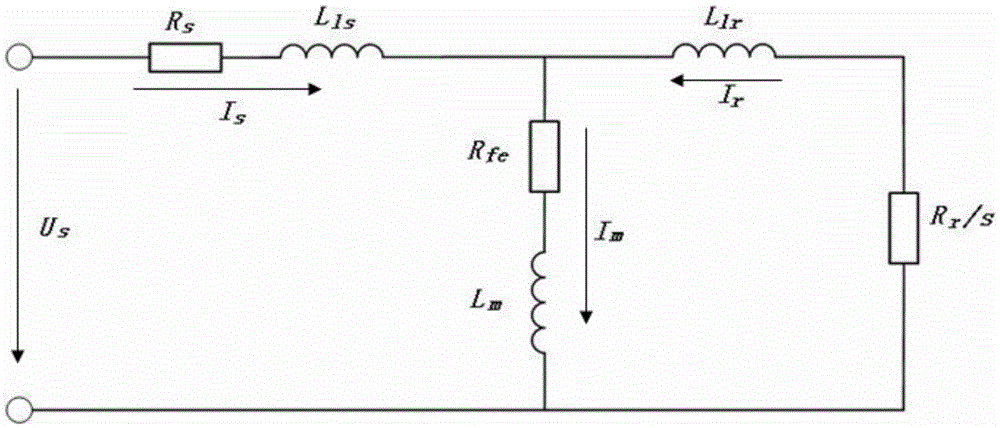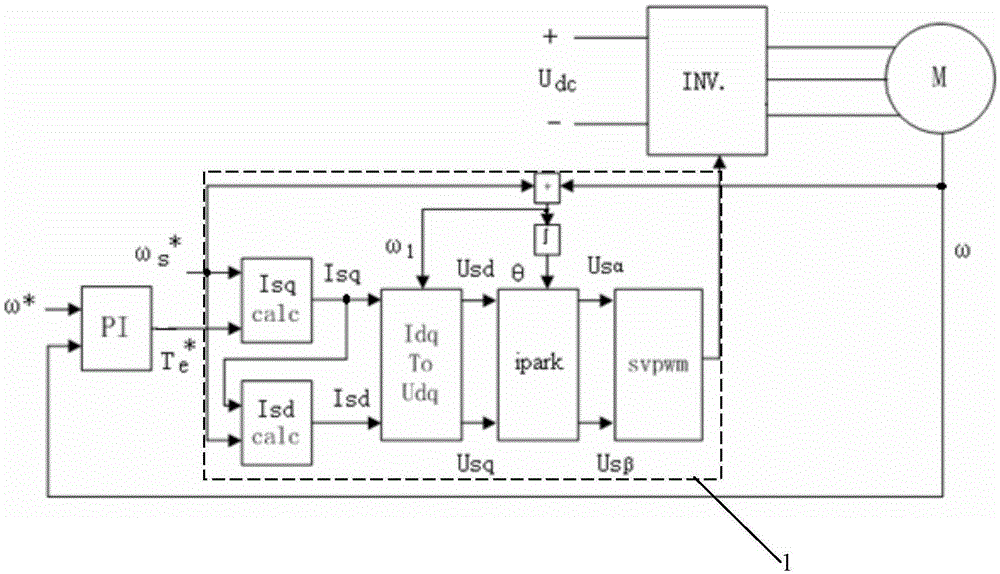A kind of energy-saving control method of asynchronous motor
An asynchronous motor, energy-saving control technology, applied in the direction of AC motor control, control system, slip frequency control, etc., can solve the problem of energy-saving effect discount and other issues
- Summary
- Abstract
- Description
- Claims
- Application Information
AI Technical Summary
Problems solved by technology
Method used
Image
Examples
Embodiment Construction
[0031] see figure 1 , figure 2 , an energy-saving control method of an asynchronous motor of the present invention, the asynchronous motor M is powered by an inverter INV., and the inverter INV. is powered by a direct current U dc Power supply; and speed regulator PI regulation, control, inverter INV. Including power module and control module 1 including digital signal processor DSP; set the given motor angular velocity ω * The difference between the actual angular velocity ω and the measured motor is sent to the speed regulator PI, and the output of the speed regulator PI is the given electromagnetic torque of the motor ω s * is the optimal slip angular frequency for asynchronous motor operation, that is, when the motor operates at this slip angular frequency, the motor will have the highest operating efficiency after the motor runs to a steady state; the optimal slip angular frequency ω s * for:
[0032] ω s ...
PUM
 Login to View More
Login to View More Abstract
Description
Claims
Application Information
 Login to View More
Login to View More - R&D
- Intellectual Property
- Life Sciences
- Materials
- Tech Scout
- Unparalleled Data Quality
- Higher Quality Content
- 60% Fewer Hallucinations
Browse by: Latest US Patents, China's latest patents, Technical Efficacy Thesaurus, Application Domain, Technology Topic, Popular Technical Reports.
© 2025 PatSnap. All rights reserved.Legal|Privacy policy|Modern Slavery Act Transparency Statement|Sitemap|About US| Contact US: help@patsnap.com



